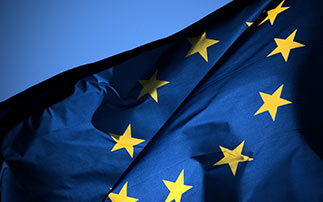The European Union has an essential tool for supporting Member States faced with major natural disasters or other emergencies: the European Union Solidarity Fund (EUSF). It was established in 2002 and its aim to assist countries that were affected by providing rapid and substantial financial support for the reconstruction and restoration of essential infrastructures.
The EUSF comes into place when Member States are faced with natural disasters such as floods, earthquakes, forest fires, storms or droughts. It can also be mobilized in the event of major industrial disasters or other emergency situations such as terrorist attacks or epidemics. In fact, the mechanism was extended during the COVID 19 emergency health situation in 2020 to deal with the pandemic. A specific emergency mechanism, called the Instrument for Emergency Support was created to provide additional financial assistance to Member States in their fight against the pandemic and to mitigate its socio-economic consequences.
What is the aim of the EUSF?
The European Union Solidarity Fund is managed by the European Commission, in collaboration with the EU Member States.
The main objective of the fund is to support the countries affected in their efforts to rebuild and restore” normality”. Funding can be used for measures such as repairing damaged infrastructure, restoring public facilities and rebuilding housing, as well as for future prevention and protection measures. For instance, it provides support by covering part of the public expenditure associated with natural disasters.
It is important to stress that the EU Solidarity Fund is not intended to fully compensate a country for its losses in the event of a disaster. Its aim is above all to make a significant contribution and facilitate recovery.
Since its creation, this fund has been mobilised on several occasions to support Member States affected by major disasters. For example, it has been used to help Greece and Portugal cope with devastating forest fires, as well as to support Italy after the earthquake that struck the Abruzzo region in 2009.
The EUSF responds to all kinds of natural disasters, such as the damage caused by hurricane Irma in Saint-Martin and provides funding for essential actions and the renovation of infrastructure and public facilities affected by the disaster. The European Commission released €46 million following this terrible event.
Application of the grant
The detailed assessment of the damage is carried out by the national authorities, in collaboration with the European Commission. This is used to determine the eligibility of the grant and the extent of the financial assistance required.
On the basis of the damage assessment, the Commission proposes an amount of financial aid. This proposal is submitted to the European Parliament and the Council of the EU to be approved.
If the proposal is approved, the funds are disbursed to the Member State concerned. The latter is then responsible for managing the funds and using them for the appropriate reconstruction and repairing measures. Each disaster case is assessed individually, and the precise procedures may vary depending on the specific situation. The State receiving the grant is responsible not only for implementing the aid but also for carrying out checks. The State must submit an implementation report to the Commission detailing the expenditure incurred that was eligible for the EUSF, the other sources of funding received (e.g. insurance, compensation, etc.) and the support from the European Structural and Investment Funds.
To conclude, the procedure for mobilising the EUSF is relatively quick and efficient. When a Member State is faced with a major disaster, it can submit a request for aid at European level. The European Commission then assesses the situation and makes a proposal to the European Parliament and the Council. Once the decision is adopted, the beneficiary country receives funding to support its reconstruction efforts.
Welcomeurope ©
Morgane Pouillet | Cassiopée Dhrami


